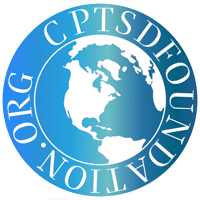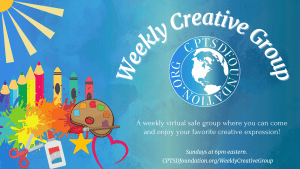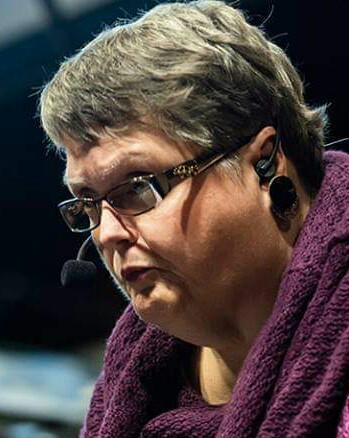Trauma and complex post-traumatic stress disorder (CPTSD) go hand-in-hand. You cannot have CPTSD without first experiencing repeated and severely traumatic events. However, you can experience trauma without forming CPTSD.
What is trauma, and how is it connected to CPTSD? This article will explore this question and examine SMART goals and what they can mean for you.
What Is Trauma?
 Trauma is exposure to an incident or series of experiences that cause emotional disturbances or are life-threatening. Trauma causes lasting adverse effects on functioning mental, physical, social, and spiritual health.
Trauma is exposure to an incident or series of experiences that cause emotional disturbances or are life-threatening. Trauma causes lasting adverse effects on functioning mental, physical, social, and spiritual health.
While there are more types of trauma than we can list here in this piece, some of the most severe include:
• Childhood neglect
• Physical, sexual, and emotional abuse
• Having a family member who is mentally ill or abuses substances
• Poverty
• A sudden separation from a loved one
• Racism, oppression
• Violence in the neighborhood, war, or terrorism
Although anyone at any age can experience trauma, children are most at risk of experiencing it, and it has long-term effects on their developing brains. Commonly referred to as adverse childhood experiences (ACEs), they are measured by answering a series of questions about negative childhood experiences. The more ACEs one experienced, the higher the test score.
The higher the test score, the more severe the effects of childhood trauma.
Other demographic groups are also highly at risk for trauma and high ACE scores, including people who identify as black, Hispanic, have less than a high school education, are low income, or are members of the LGBTQ+ population.
People react to trauma with varied fashions experiencing a wide range of physical and emotional reactions.
Emotional symptoms
Disbelief, shock, denial
Difficulty concentrating
Confusion
Anger
Mood swings
Irritability
Anxiety
Fear
Guilt and shame
Feeling hopeless
Being numb
Physical symptoms
Fatigue
Racing heartbeat
Unexplained aches and pains
Insomnia
Nightmares
Startling easily
Muscle tension
Research has shown that people who experience trauma as a child in a dysfunctional home have a higher risk of early death in the adult population (Felitti et al., 1998).
What is Complex Post-Traumatic Stress Disorder?
 Complex post-traumatic stress disorder is not recognized by the Diagnostic and Statistical Manual of Mental Disorders, fifth edition (DSM-5). However, CPTSD affects the lives of millions of people worldwide. The International Classification of Diseases 11th Revision (ICD-11) has recognized CPTSD for many years and describes it as a disorder that develops after witnessing or experiencing a series of highly threatening events.
Complex post-traumatic stress disorder is not recognized by the Diagnostic and Statistical Manual of Mental Disorders, fifth edition (DSM-5). However, CPTSD affects the lives of millions of people worldwide. The International Classification of Diseases 11th Revision (ICD-11) has recognized CPTSD for many years and describes it as a disorder that develops after witnessing or experiencing a series of highly threatening events.
While found chiefly in children or adult survivors of childhood abuse, we can also find CPTSD in adults who experience repetitive and ongoing events such as slavery, partner violence, or torture.
People affected by complex post-traumatic stress disorder struggle to have a positive outlook on life, have elevated anxiety levels, and have great difficulty regulating emotions.
Those with CPTSD also experience perpetual hyperarousal, where they are anxious and watching for more danger even though the danger may have ended decades before. This behavior occurs because our brain remembers what happened and how it felt. When triggered, the part of our brain called the amygdala goes into fight-or-flight mode, causing one to dread every day that something else will happen.
Our brain is determined we will not experience trauma again.
The Symptoms of Complex PTSD
 As you may have surmised, CPTSD is much like post-traumatic stress disorder (PTSD) with the same symptoms but more. While a threat to one’s person causes PTSD, the trauma is not ongoing for several months or years.
As you may have surmised, CPTSD is much like post-traumatic stress disorder (PTSD) with the same symptoms but more. While a threat to one’s person causes PTSD, the trauma is not ongoing for several months or years.
The symptoms of complex post-traumatic stress disorder include what you would experience with PTSD and the following symptoms.
• Losing or reliving memories of trauma
• Difficulties regulating emotions
• Rage
• Depression
• Suicidal actions or thoughts
• Sudden unexpected, or unexplained mood swings
• Feeling detached
• Feeling deep shame and guilt
• Difficulty forming and maintaining intimate relationships
• Difficulty trusting others
• Becoming a rescuer or seeking one
• Feeling fear when there is no danger
• Feeling constantly alert
• Obsessions with revenge on the perpetrator
• Loss of spiritual attachment
• Depending on religion for self-worth and self-identity
These symptoms can become serious; if you experience them drastically, please seek help from a mental health professional.
Healing from Trauma: Long and Short-Term Goals
 Short-term goals are things you want to do shortly, meaning today, this week, this month, or this year. Although short-term goals may seem small, completing them brings a sense of accomplishment.
Short-term goals are things you want to do shortly, meaning today, this week, this month, or this year. Although short-term goals may seem small, completing them brings a sense of accomplishment.
Long-term goals are things you want to complete much later that need planning and may take several steps or stages to reach. Long-term goals help you find purpose and a sense of direction.
Setting goals is vital to healing from traumatic distress and complex post-traumatic stress disorder because part of the problems faced by those who have CPTSD is that they are dysregulated in their emotions. Having a goal to shoot for helps them focus on moving ahead instead of remaining stuck.
SMART goals are used to help guide one in setting goals. SMART is short for specific, measurable, achievable, realistic, and timely. SMART goals incorporate all these criteria. One needs to remain focused on their efforts and raise the chance of successfully moving ahead. I will explain more below.
Specific. These goals are essential because they bring much satisfaction from being accomplished. To make a specific goal, you must answer five fundamental questions: who, what, where, when, and why.
• Who is involved in this goal?
• What do I want to accomplish?
• Where is this goal to be accomplished?
• When do I want to achieve this goal?
• Why do I want to achieve this goal?
Measurable. SMART goals need criteria for measuring progress. Without it, you couldn’t determine your progress to see if you are moving in the direction you want to. To make a measurable goal, ask yourself, “how do I know I have reached my goal,” and “what is the indicator of your progress?”
Achievable. SMART goals must be achievable and attainable. SMART goals help you identify things you can do to reach your goal and work toward it. Achievability should stretch you and make you feel challenged yet satisfied. Ask yourself if you have the resources and abilities to reach the goal. If you cannot, ask yourself what you are missing. Also, evaluate to see if anyone else has reached this goal already.
Realistic. A SMART goal must include realistic expectations based on the resources you have at the time. Ask yourself, “is the goal realistic and within reach? Is the goal reachable considering any time or resource constraints? Can you commit to achieving the goal?”
Timely. SMART goals must be bound by time from when it starts and the finish date. Without time constraints, you will have no sense of urgency, which means less motivation to achieve the goal. Question yourself to see if your goal has a deadline and when you want to achieve it.
SMART goals will help you work with your therapist better and push you along the road less taken with a sense of direction and purpose.
Ending Our Time Together
Traumatic events should not hold you down or make you suffer if you choose not to do so. By using tools like SMART goals and psychotherapy, it is entirely possible to challenge yourself yet achieve great satisfaction from those achievements.
Complex post-traumatic stress disorder feeds on trauma, but your outcome from childhood neglect and abuse need not be negative, only you can decide what you will do.
To defeat CPTSD and the trauma that formed it, it is time to build yourself up and reach for the stars.
“Set your goals high, and don’t stop till you get there.” Bo Jackson
“Successful people maintain a positive focus in life no matter what is happening around them. They stay focused on their past successes rather than their past failures, and on the next action steps they need to take to get them closer to the fulfillment of their goals rather than all the other distractions that life presents to them.” Jack Canfield
References
Felitti, V. J., Anda, R. F., Nordenberg, D., Williamson, D. F., Spitz, A. M., Edwards, V., & Marks, J. S. (1998). Relationship of childhood abuse and household dysfunction to many of the leading causes of death in adults: The Adverse Childhood Experiences (ACE) Study. American journal of preventive medicine, 14(4), 245-258.

Each week the Weekly Creative Group comes together to give members the opportunity to slow down, relax, and express themselves using their preferred creative outlet. Paints, coloring, sketching, arts & crafts, sewing, cooking, model building, and more… whatever you like to do to unwind and relax with some quality “you” time.
You’ll be able to settle in and work on your creative project alongside others in our safe healing space online. Your creativity is unique to you, and you are welcome here with us, just as you are.
The call leader will play relaxing music and offer encouragement as each member works on their individual projects. There may also be optional group projects available for everyone to work on.
Cameras are optional on these calls. The call leader will angle their camera on their project and share as they work. If you would like to share your creativity with the group, you are always welcome to do so. However, there is never any pressure or requirement to share.
In addition, you can join our Weekly Creative Group private forum and interact with other members throughout the week, including sharing your creative projects and ideas.


My name is Shirley Davis and I am a freelance writer with over 40-years- experience writing short stories and poetry. Living as I do among the corn and bean fields of Illinois (USA), working from home using the Internet has become the best way to communicate with the world. My interests are wide and varied. I love any kind of science and read several research papers per week to satisfy my curiosity. I have earned an Associate Degree in Psychology and enjoy writing books on the subjects that most interest me.





Great post, thank you Shirley.